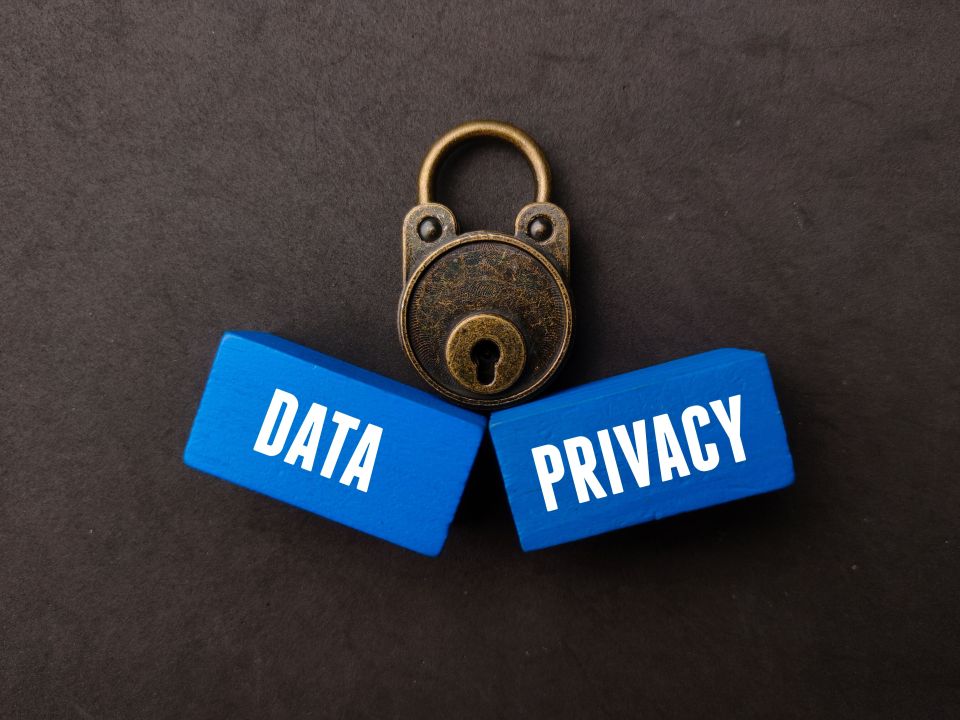The Evolution of Domain Privacy in the Modern Digital Threat Landscape
Domain privacy and WHOIS protection have become fundamental security requirements in 2025’s increasingly hostile digital environment, where personal information exposure through domain registration creates significant risks for individuals and organizations. The traditional WHOIS database, originally designed for network troubleshooting and administrative coordination, has evolved into a treasure trove for cybercriminals, spammers, and malicious actors seeking to exploit publicly available registration data.
Modern threat actors employ sophisticated techniques to harvest WHOIS data for identity theft, social engineering attacks, targeted phishing campaigns, and business espionage. Recent cybersecurity research indicates that domains without privacy protection receive 73% more spam emails and face 45% higher risks of targeted cyber attacks compared to protected domains. The financial impact of WHOIS exposure extends beyond individual inconvenience to include substantial business costs from security breaches and reputation damage.
The regulatory landscape surrounding domain privacy has transformed significantly with the implementation of GDPR, CCPA, and other data protection regulations that require enhanced privacy protections for personal information. These legal frameworks have forced fundamental changes in WHOIS database operations while creating new compliance requirements for domain registrants and service providers.

Understanding WHOIS Database Structure and Privacy Implications
WHOIS Database Architecture and Public Information Exposure
The WHOIS database system operates as a distributed directory service that stores registration information for every domain name, making registrant details publicly accessible through simple queries. This transparency mechanism, essential for early internet governance, now creates significant privacy and security vulnerabilities as the internet has evolved into a complex commercial and social ecosystem.
Standard WHOIS records contain comprehensive personal information including full names, physical addresses, phone numbers, email addresses, and organizational affiliations. This data becomes immediately searchable by anyone with internet access, creating persistent digital footprints that can be exploited years after initial registration.
- Registrant Information: Personal or business contact details including full address
- Administrative Contact: Individual responsible for domain policy decisions
- Technical Contact: Person managing technical aspects of domain configuration
- Billing Contact: Entity responsible for domain renewal payments
- Creation Date: Domain registration timestamp for historical analysis
- Expiration Date: Domain renewal deadline for targeting expired domains
- Nameserver Information: DNS infrastructure details revealing hosting patterns
Privacy Threats and Attack Vectors
WHOIS information exposure enables multiple attack vectors that sophisticated threat actors exploit for financial gain, competitive intelligence, and malicious activities. Understanding these threats helps organizations appreciate the critical importance of implementing comprehensive privacy protection strategies.
Cybercriminals use WHOIS data to craft highly targeted social engineering attacks, combining publicly available registration information with data from other sources to create convincing impersonation attempts. These attacks often target business executives, domain administrators, and other individuals with access to valuable systems or information.
Regulatory Compliance and Legal Requirements
Modern data protection regulations have fundamentally altered WHOIS database operations, requiring registrars and registries to implement privacy-by-default approaches while maintaining necessary transparency for legitimate purposes. Organizations must navigate complex compliance requirements that vary across jurisdictions and domain extensions.
GDPR implementation has led to significant WHOIS database redaction for European registrants, while other jurisdictions maintain traditional transparency requirements. This patchwork of regulations creates compliance challenges for global organizations managing domain portfolios across multiple legal frameworks.
- GDPR Requirements: European data protection standards affecting WHOIS visibility
- CCPA Compliance: California privacy regulations impacting domain registration
- Industry Standards: Sector-specific privacy requirements for regulated industries
- Cross-Border Issues: Conflicting privacy laws across different jurisdictions
- Legitimate Interest: Balancing transparency needs with privacy protection
Advanced Domain Privacy Protection Strategies
Privacy Service Provider Selection and Evaluation
Selecting appropriate privacy service providers requires comprehensive evaluation of security capabilities, legal compliance, service reliability, and long-term viability. Professional privacy protection extends beyond simple contact information masking to include advanced security features and comprehensive protection against emerging threats.
Enterprise-grade privacy services offer enhanced features including legal protection services, identity verification systems, and specialized support for high-value domains. These services provide additional layers of protection that become essential for businesses with significant online presence or those operating in competitive markets.
Proxy Service Configuration and Management
Proxy service configuration involves replacing registrant information with privacy service provider details while maintaining legitimate access channels for authorized communications. Effective proxy services provide seamless forwarding of legitimate inquiries while filtering spam and malicious contact attempts.
Modern proxy services employ artificial intelligence and machine learning to automatically categorize incoming communications, forwarding legitimate business inquiries while blocking spam and suspicious contact attempts. This intelligent filtering reduces administrative overhead while maintaining business accessibility.
- Automated Filtering: AI-powered systems distinguish legitimate from malicious contacts
- Custom Forwarding Rules: Configurable policies for different types of inquiries
- Legal Compliance: Proper handling of law enforcement and legal requests
- Business Integration: Seamless forwarding of commercial communications
- Security Monitoring: Real-time detection of suspicious contact patterns

Implementation and Configuration Best Practices
Registration-Time Privacy Protection Setup
Implementing privacy protection during domain registration provides immediate security benefits while avoiding the complications of retroactive privacy application. Professional registration strategies include privacy protection as a standard requirement rather than an optional add-on service.
Registration-time privacy setup involves selecting appropriate protection levels, configuring forwarding preferences, and establishing contact management procedures that support business operations while maintaining security. These initial configurations establish the foundation for long-term privacy protection effectiveness.
Retroactive Privacy Protection for Existing Domains
Adding privacy protection to existing domains requires careful planning to minimize business disruption while addressing accumulated privacy risks from historical WHOIS exposure. Retroactive protection cannot eliminate historical data exposure but prevents future privacy violations and reduces ongoing risks.
Professional retroactive privacy implementation includes audit procedures to identify exposed information, notification systems for stakeholders, and updated communication procedures to maintain business continuity during the transition period.
- Historical Data Assessment: Evaluate existing WHOIS information exposure
- Stakeholder Notification: Inform relevant parties about privacy changes
- Communication Updates: Modify business contact procedures as needed
- Monitoring Systems: Track privacy protection effectiveness after implementation
- Compliance Documentation: Maintain records of privacy protection decisions
Multi-Domain Portfolio Privacy Management
Organizations with large domain portfolios require centralized privacy management systems that provide consistent protection across all assets while enabling efficient administration and monitoring. Portfolio-level privacy management includes standardized protection policies, bulk configuration capabilities, and comprehensive reporting systems.
Enterprise privacy management platforms offer automated policy enforcement, exception handling for special requirements, and integration with broader security and compliance systems. These capabilities become essential as domain portfolios grow and privacy requirements become more complex.
Legal Considerations and Compliance Requirements
Balancing Privacy Protection with Legal Transparency
Effective privacy protection must balance individual privacy rights with legitimate transparency requirements for law enforcement, intellectual property protection, and consumer protection purposes. Understanding these balance points helps organizations implement privacy strategies that provide maximum protection while maintaining legal compliance.
Legal transparency requirements vary significantly across jurisdictions and industries, requiring privacy strategies that can adapt to different legal frameworks while maintaining consistent protection standards. Professional privacy implementation includes procedures for handling legitimate disclosure requests while protecting against fishing expeditions and unauthorized access attempts.
Industry-Specific Privacy Requirements
Regulated industries often face additional privacy requirements that extend beyond standard domain privacy protection to include specialized compliance measures, audit trails, and reporting obligations. Healthcare, financial services, and government contractors may require enhanced privacy protections that exceed standard commercial offerings.
Industry-specific privacy strategies must consider sector regulations, professional standards, and customer expectations that may require additional privacy measures or transparency requirements. These considerations influence privacy service selection and configuration decisions.
- Healthcare Compliance: HIPAA and other medical privacy requirements
- Financial Regulations: Banking and financial service privacy standards
- Government Contracting: Security clearance and transparency requirements
- Professional Services: Attorney-client privilege and confidentiality obligations
- International Standards: Cross-border privacy and disclosure requirements

Advanced Security Features and Protection Mechanisms
Enhanced Privacy Service Features
Modern privacy services offer advanced features beyond basic contact information masking, including threat intelligence integration, automated security responses, and comprehensive protection against emerging attack vectors. These enhanced capabilities provide enterprise-grade protection for high-value domains and sensitive business operations.
Advanced privacy features include real-time threat monitoring, automated abuse reporting, and integration with broader cybersecurity ecosystems. These capabilities transform privacy services from passive protection mechanisms into active security tools that contribute to overall organizational security posture.
- Threat Intelligence Integration: Real-time monitoring of domain-related security threats
- Automated Abuse Reporting: Immediate response to malicious use attempts
- Security Analytics: Pattern analysis for detecting sophisticated attacks
- Legal Support Services: Professional assistance with legal and compliance issues
- Emergency Response: Rapid response capabilities for security incidents
Integration with Broader Security Frameworks
Domain privacy protection works most effectively when integrated with comprehensive cybersecurity frameworks that include endpoint protection, network security, and identity management systems. This integration provides holistic protection that addresses domain-related threats within the context of broader organizational security strategies.
Professional security integration includes automated threat sharing between privacy services and security platforms, coordinated incident response procedures, and unified monitoring systems that provide comprehensive visibility into domain-related security events.
Monitoring and Incident Response Procedures
Effective privacy protection requires ongoing monitoring to detect attempted breaches, suspicious activities, and emerging threats that may compromise domain security. Professional monitoring systems provide real-time alerting, automated response capabilities, and comprehensive logging for security analysis and compliance purposes.
Incident response procedures for domain privacy breaches must address immediate containment, stakeholder notification, regulatory reporting, and long-term remediation activities. These procedures become critical when privacy protections fail or when sophisticated attacks overcome standard security measures.
Cost-Benefit Analysis and Service Selection
Privacy Service Cost Evaluation
Privacy service costs vary significantly across providers and service levels, requiring comprehensive cost-benefit analysis that considers direct service fees, administrative overhead, and potential costs of privacy breaches. Professional cost evaluation includes total cost of ownership calculations that account for long-term requirements and scalability needs.
Enterprise privacy services typically offer better value for organizations with large domain portfolios through bulk pricing, advanced features, and comprehensive support services. These services provide cost efficiencies while delivering enhanced protection capabilities that justify premium pricing for critical business assets.
ROI Assessment for Privacy Protection Investments
Return on investment calculations for privacy protection must consider both direct financial benefits and indirect value creation through risk reduction, brand protection, and compliance efficiency. Professional ROI assessment includes quantifiable metrics such as spam reduction, security incident prevention, and administrative time savings.
Privacy protection ROI often includes intangible benefits such as enhanced customer trust, improved employee security, and reduced legal exposure that provide long-term value beyond immediate cost savings. These factors become increasingly important as privacy becomes a competitive differentiator and regulatory requirement.
- Direct Cost Savings: Reduced spam, telemarketing, and unwanted solicitations
- Security Cost Avoidance: Prevention of identity theft and cyber attacks
- Productivity Benefits: Reduced time spent managing privacy-related issues
- Compliance Value: Streamlined regulatory compliance and audit procedures
- Brand Protection: Prevention of reputation damage from privacy breaches

Future Trends in Domain Privacy and Protection
Artificial Intelligence and Automated Privacy Protection
Artificial intelligence is revolutionizing domain privacy protection through intelligent threat detection, automated response systems, and predictive privacy risk assessment. AI-powered privacy services can identify emerging threats, adapt protection strategies in real-time, and provide personalized privacy recommendations based on usage patterns and risk profiles.
Machine learning algorithms analyze communication patterns to distinguish legitimate business inquiries from spam and malicious contacts with increasing accuracy. These systems continuously improve their filtering capabilities while reducing false positives that could impact business operations.
Blockchain and Decentralized Privacy Solutions
Blockchain technology offers new paradigms for domain privacy that provide enhanced security, reduced reliance on centralized privacy services, and improved transparency for privacy protection mechanisms. Decentralized privacy solutions may fundamentally change how domain privacy is implemented and managed.
Smart contract-based privacy systems can automate privacy protection decisions, ensure consistent policy enforcement, and provide auditable privacy protection mechanisms that enhance trust and compliance capabilities. These technologies are beginning to mature and may offer superior privacy protection in the coming years.
- Decentralized Identity: Blockchain-based identity verification and protection
- Smart Contract Privacy: Automated privacy policy enforcement
- Zero-Knowledge Proofs: Privacy verification without information disclosure
- Distributed Privacy Services: Peer-to-peer privacy protection networks
- Immutable Privacy Logs: Blockchain-based privacy audit trails
Regulatory Evolution and Privacy Standards
Privacy regulations continue evolving toward stronger protection requirements, global harmonization of privacy standards, and enhanced enforcement mechanisms that will shape future domain privacy implementations. Organizations must prepare for stricter privacy requirements and more sophisticated compliance obligations.
Emerging privacy standards emphasize privacy-by-design principles, automated compliance monitoring, and enhanced individual rights that will require more sophisticated privacy protection systems. These trends indicate that privacy protection will become more comprehensive and technically complex over time.
Implementation Guide and Best Practices
Step-by-Step Privacy Protection Implementation
Professional privacy protection implementation follows systematic procedures that ensure comprehensive coverage while minimizing business disruption. These procedures include assessment, planning, implementation, and monitoring phases that provide structured approaches to privacy protection deployment.
Implementation planning considers business requirements, technical constraints, compliance obligations, and cost considerations to develop customized privacy strategies that provide optimal protection for specific organizational needs and risk profiles.
Ongoing Management and Optimization
Effective privacy protection requires ongoing management to maintain protection effectiveness, adapt to changing requirements, and optimize performance based on operational experience. Professional privacy management includes regular reviews, performance monitoring, and continuous improvement processes.
Privacy protection optimization involves analyzing communication patterns, adjusting filtering rules, updating protection policies, and evaluating new technologies that may enhance privacy protection capabilities. These activities ensure that privacy protection remains effective as threats evolve and business requirements change.
- Regular Reviews: Periodic assessment of privacy protection effectiveness
- Performance Monitoring: Tracking key metrics for privacy service performance
- Policy Updates: Adjusting protection policies based on experience and requirements
- Technology Evaluation: Assessing new privacy technologies and services
- Compliance Monitoring: Ensuring ongoing regulatory compliance
Conclusion: Building Comprehensive Domain Privacy Strategies
Domain privacy and WHOIS protection have evolved from optional convenience features to essential security requirements that protect individuals and organizations from increasingly sophisticated digital threats. Effective privacy protection strategies require comprehensive planning, professional implementation, and ongoing management to maintain protection effectiveness in the face of evolving threats and changing regulatory requirements.
The future of domain privacy lies in artificial intelligence, blockchain technology, and enhanced regulatory frameworks that provide stronger protection while maintaining necessary transparency for legitimate purposes. Organizations that invest in comprehensive privacy protection strategies will gain competitive advantages through enhanced security, improved compliance, and stronger customer trust in an increasingly privacy-conscious marketplace.
Success in domain privacy protection requires understanding the complex interplay between technical capabilities, legal requirements, and business objectives. By implementing professional privacy protection strategies and maintaining ongoing vigilance, organizations can protect their digital assets while supporting business growth and operational excellence in the modern digital economy.







